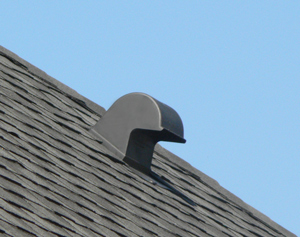 If you’ve ever worked on a roof during the summer you’ve probably noticed it can get pretty hot up there. In fact, standard roof coverings that are dark in color can easily reach 150°F/65°C in the hot sun, potentially causing damage to the roof and transferring heat to the building below.
If you’ve ever worked on a roof during the summer you’ve probably noticed it can get pretty hot up there. In fact, standard roof coverings that are dark in color can easily reach 150°F/65°C in the hot sun, potentially causing damage to the roof and transferring heat to the building below.
One way to reduce these effects is to use different roof coverings to create what are known as “cool roofs” or “white roofs.” These can be white or light-colored and usually incorporate some kind of reflective material that directs the sun’s heat away from a building. They are also good thermal emitters that let heat escape rather than being absorbed.
High roof temperatures aren’t just a concern in hot climates as summer temperatures are rising everywhere. According to NASA, 15 of the 16 warmest years on record have occurred since 2001, with 2015 shattering the previous record set in 2014.
There is also a lot more air conditioning than there used to be, particularly in the United States. According to The Guardian Newspaper, Americans consume more energy for air conditioning than the rest of the world combined!
Air conditioning has led to sharp peaks in demand for electricity in the afternoons when the sun is at its hottest. This can cause instability in the power grid and forces power plants to generate more electricity driving up costs and potentially creating more pollution and greenhouse gases.
How cool roofs chill out a house
By decreasing the amount of heat absorbed by a building, cool roofs can greatly reduce the power needed for air conditioning and in turn help the environment. What’s more, the energy savings come at the peak time of day when most utilities charge more for electricity.
Another important factor to consider is what’s known as the urban heat island effect (UHI) where temperatures in cities get higher than surrounding areas because of heat absorption by dark surfaces made of concrete and asphalt. If a number of large buildings in an urban area have cool roofs they can combine to reduce local air temperatures.
Venting cool roofs
There are various cool roof technologies but they generally rely on a coating that is white or light-colored and contains reflective particles. For low-sloped roofs, white membranes are available that combine highly reflective and UV-resistant pigments. These can be combined with reinforcement layers and a base sheet to produce a built-up roof.
For steeper sloped roofs, asphalt shingles can be made cool by lightening the color and covering with granules with a special reflective coating. Tile roofs and unpainted metal roofs already have reflective qualities that can be enhanced with white coatings.
In addition to reflective coatings, roofs can be kept cooler by ventilating attic space below. This requires adding vents or grilles to soffits that allow cooler air to be drawn into the attic. This replaces hot air that rises upward and finally escapes through roof vents or ridge cap vents.
Are cool roofs only advantageous in hotter climates? It turns out there is quite a bit of debate as to which areas in North America would truly benefit.
There is the long held belief that in northern latitudes dark roofs can lower heating costs by absorbing the sun’s warmth during the winter. However, because heat rises, the warmth absorbed by the roof will tend to stay at the top of the building and not make its way down to the living areas below. Also, the sun shines a lot less in the wintertime and strikes the Earth from a low angle meaning that any warming effect and lowering of heating costs would be quite minimal.
Energy savings versus install costs
So, the decision to choose a cool roof largely depends on calculating the long-term savings versus the upfront cost of installation. Most of the savings come from using less power at peak periods but also HVAC equipment doesn’t need to handle as much load. This makes it cheaper to buy, install and maintain. Also, because the roof itself does not get as hot it may last substantially longer.
Installation costs will depend on the type of roof and whether it is a new install or an existing roof that is being converted. Conversion can involve adding a coating to the existing roof material or recovering it with cool material. There may also be more cost to maintaining and cleaning cool roofs.
The amount of energy that can be saved in your area can be estimated by using the United States Department of Energy’s cool roof calculator, which also includes the major Canadian Cities.



